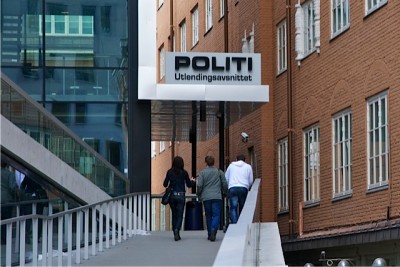A government commission studying integration in Norway has concluded that most immigrants are well-integrated, but around 125,000 are stuck in low-income jobs or dependent on state aid. The commission urged new measures to get them into the higher-paid workforce.

“The commission has documented that current measures don’t yield good enough results, and criticizes public sector authorities who aren’t reducing differences within society,” said commission leader Osmund Kaldheim. “This especially affects women and children. The commission proposes higher ambitions and around 200 suggestions for better integration.”
Kaldheim, who formerly headed a state integration directorate (Integrerings- og mangfoldsdirektoratet, IMDi), formally handed over the commission’s report to Audun Lysbakken, the government minister in charge of children’s, equality and integration issues.
It’s the second major report on integration issues in the last month, after the so-called Brochmann Commission studied how welfare programs are influenced by immigration and how they can be used to help or hinder immigration.
The Kaldheim Commission, as newspaper Dagsavisen reported earlier on Tuesday, doesn’t think that high concentrations of immigrants living in certain areas is a problem in itself. Rather, the members think, it’s most important to get them all into well-paying jobs.
Masud Gharahkhani, the Labour Party’s candidate for mayor in Drammen, agrees. He was born in Iran and came to Norway as a five-year-old. He said the Fjell district of Drammen has a high concentration of immigrants and those who live there “have housing associations that function well, it’s a safe area and folks take care of the place and support each other.” The problem, he said, is “that many children don’t speak Norwegian well enough when they start school.” He has proposed pre-school language to ensure that Norwegian be the children’s common language, agreeing that in turn can boost job prospects in the future.
The commission suggests a 10-year program that would focus on labour issues that would conform to immigrants’ needs, such as language and job training. It urges free Norwegian language lessons in local day care centers, to make sure immigrant children are fluent in Norwegian when they start school, and a full evaluation of Norwegian language classes in the schools.
A reform of adult education for immigrants was also proposed, to make sure all can read and write Norwegian. And the commission stressed that “common values” in Norway be clearly communicated within immigrant communities, including equality, freedom of expression and tolerance.
“Integration is all about work, language and equality,” Lysbakken said. “The commission is giving us documented knowledge about how we can create a society where new groups are included.”
Lysbakken said the commission’s findings would be put out to public hearing later this summer. The costs of integration measures have been rising dramatically in recent years and are expected to continue to increase. Newspaper Aftenposten reported last week that a new wave of asylum seekers will put more pressure on immigration and integration resources.
Views and News from Norway/Nina Berglund
Join our Readers’ Forum or comment below.
To support our news service, please click the “Donate” button now.

